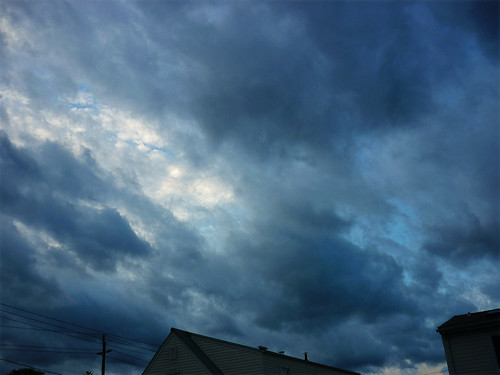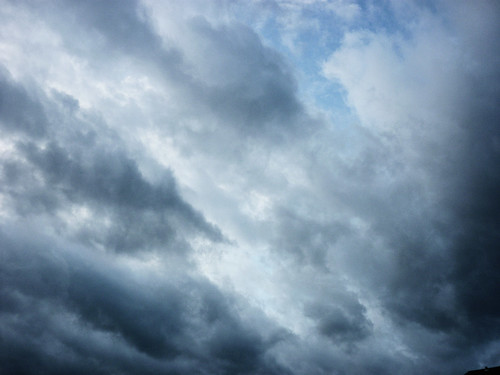


The wind and rain died down enough by this evening for me to take these photos of
As the storm hit, I found myself resorting to an activity that I rarely partake in: watching real-time, local TV news. The problem with 24-hour coverage of a single issue is that only about 1 hour of "news" ever exists, so much of the time was spent investigating hurricane parties and apocalyptic hoarders. The natural phenomena of the tropical storm is trumped only by the human spectacle. Supermarkets, convenience stores and gas stations will certainly agree, with up to 200% increases in profits this weekend, according to a local source.
Twitter turned out to be a moderately more useful fountain of information (local and regional), but it also helped to transmit some items of misinformation exponentially faster than the network news outlets. The most annoying example of this came from images of the storm and its aftermath (e.g. flooded subways and tunnels) that were clearly photoshopped or taken from old and entirely unrelated sources. Some of my most "reliable" Twitter people/organizations tweeted without verifying, and moments later would have to send a follow-up tweet apologizing for being lured in by a dramatic or shocking image too good to pass up.
So how are we supposed to know whether a photo is legitimate or not? One way is to look at the Exif data (metadata attached to nearly all digital photos that can tell us the time, date taken and other attributes, see here for a brief how-to). Another useful tip for helping to verify the provenance and authenticity of images is by using a reverse image search like TinEye, a quick online tool that will show you "where an image came from, how it is being used, [and] if modified versions of the image exist". If you're an anthropologist interested in digital media, a web/graphic designer, archivist or other online researcher, you might just find the tool indispensable. These days, we expect mainstream media to get it wrong and social media fans are the first to stress the importance of fact-checking presumed truths. It just takes a moment before you blog, re-blog or re-tweet to save having to retract.








1 comments:
It is amazing how fair warning went out into a major metropolitan area in a timely fashion making the numbers of lives and injuries a minimum. Had Irene hit NYC the way it was predicted there would have been major negative long lasting economical effects on the city.
Post a Comment
If you got this far, you should probably leave a comment, no?